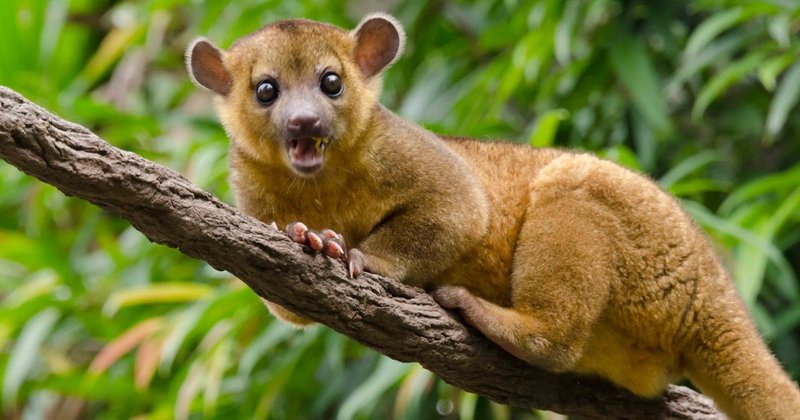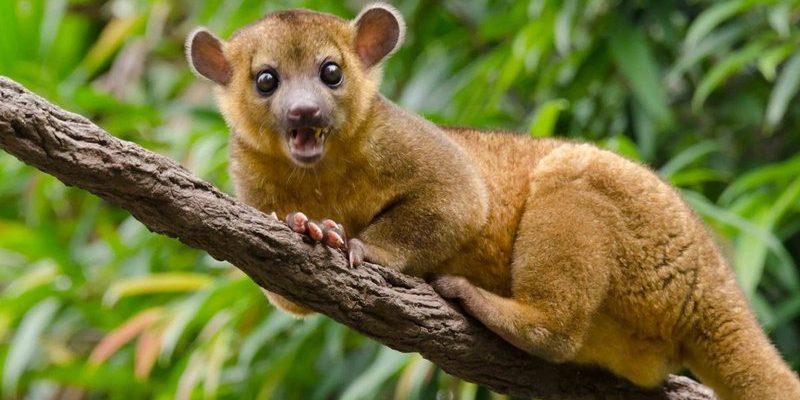
Imagine raising a family high up in the treetops, surrounded by lush foliage and the sounds of the jungle. That’s the world of kinkajous. Their parenting style is a bit like a rollercoaster ride—full of ups and downs, twists and turns. Let’s dive into the enchanting world of kinkajous and explore how these adorable mammals care for their young in the wild.
Understanding Kinkajous and Their Habitat
Kinkajous are part of the raccoon family, and their habitats can be found in the humid rainforests of Central and South America. These small, nocturnal mammals are notable for their large eyes, long tails, and prehensile hands that allow them to grip branches as they move through the trees. They thrive in the treetops, where they form a vital part of the ecosystem by pollinating flowers and dispersing seeds.
In their natural environment, kinkajous prefer to reside in areas dense with fruit and nectar-producing plants. They’re particularly fond of figs, and their long tongues make them well-equipped to reach nectar deep inside flowers. This diet supports both their energy needs and their reproductive health, which is essential when raising young.
The Mating Rituals of Kinkajous
Kinkajous usually mate during the rainy season, which aligns with the abundance of food. Mating can involve a series of vocalizations and playful displays, often taking place in the trees. Males will use vocal calls to attract females, and once a pair finds a bond, they may mate multiple times.
After a gestation period of about 120 days, the mother kinkajou gives birth to a single offspring or sometimes twins. The timing of their births is crucial, as having babies during a food-rich season enhances the chances of survival. It’s like planting seeds in the spring—timing is everything when it comes to nurturing the next generation.
Caring for the Young: Birth and Early Life
When kinkajous give birth, they typically find a cozy spot in a tree hollow or an old bird’s nest. These places not only provide safety from predators but also warmth, which is critical for newborns. Kinkajou babies are born blind and helpless, relying entirely on their mothers for warmth and nourishment.
Strong maternal instincts kick in as soon as the babies arrive. The mother will spend most of her time with her young, grooming them and ensuring they’re fed. She nurses the babies for several months, feeding them the rich, nutrient-packed milk that helps them grow. As they mature, they begin to explore their surroundings under their mother’s watchful eye.
The Weaning Process: Transitioning to Solid Food
Around three months old, kinkajou babies start the weaning process. This can be compared to a child moving from milk to solid food. During this phase, they begin to sample fruits and nectar, learning what’s safe and nutritious to eat. The mother plays a critical role in this transition, introducing her young to various foods and teaching them how to forage.
The weaning process is gradual. At first, babies will continue to nurse while progressively eating more solid foods. This tasty training helps them develop the skills they need to thrive independently. It’s fascinating how the mother highlights the importance of diet and survival, setting the stage for their young to become skilled foragers in their own right.
Learning to Climb: Developing Skills
As kinkajous grow, so does their curiosity. Climbing and exploring become essential parts of their daily routine. By around six months, young kinkajous begin to venture farther from their mother, testing their climbing abilities and agility. They learn how to navigate the treetop canopies, honing their skills with each playful leap and bound.
Mothers often accompany their young on these little adventures, modeling how to climb and forage. This is not just playtime; it’s a crucial learning experience. Young kinkajous learn to assess their surroundings, avoid dangers, and find food, gradually becoming more self-sufficient over time. Think of it as a hands-on education in the wild, where the classroom is the forest itself.
Independence and Social Structure
By the time kinkajous reach about a year old, they’re ready to strike out on their own. While they might remain in close proximity to their mother for a little while longer, they start developing their own social links and friendships within their group. Kinkajous are generally social animals, often seen interacting and grooming each other.
Their strong social bonds are vital for survival. It’s a bit like having a tight-knit community where everyone looks out for one another. Young kinkajous learn the ropes from their peers, discovering where to find the best food and how to avoid potential threats in their environment. It’s a shared adventure, one that helps solidify their skills and confidence.
Challenges in the Wild: Predator Threats and Survival
Life in the wild isn’t without its challenges. Kinkajous face threats from various predators, including hawks, snakes, and even larger mammals. These dangers make it imperative for the young kinkajous to learn survival strategies quickly. Their mother plays a crucial role in teaching them how to navigate risks and stay alert.
Additionally, habitat destruction poses a significant challenge for kinkajous. As rainforests disappear, so do their homes and food sources, making both parenting and survival even more challenging. This underscores the importance of conservation efforts to protect these unique creatures and their habitats. Understanding the challenges kinkajous face is crucial for fostering a deeper appreciation for their lives.
Ultimately, the world of kinkajous offers a delightful glimpse into how these unique mammals raise their young. From nurturing and teaching to facing the challenges of the wild, kinkajous have a parenting journey that’s as engaging as it is vital for their survival.
In closing, kinkajous demonstrate resilience and adaptability in their parenting methods. By studying their behavior in the wild, we not only learn about their unique ways of raising their young but also the importance of protecting their habitats for future generations. It’s a beautiful reminder of the intricate connections in nature and the role each species plays in our ecosystem.

